When A2A Simulations first announced that they were doing an Accu-Sim C172, many within their community were actually quite upset. After all, with the exception of the B377 that started the whole thing off and the later Piper J3 Cub, all of the Accu-Sim models have been warbirds. That’s what the community wanted, even demanded.
In the clear light of day, however, the C172 was very much a hit. Many of the “warbird-only” fliers are now flying, shock horror, a modern GA ‘Spam Can’. Even worse, they’re enjoying flying a modern GA ‘Spam Can’. More to the point, it also brought in a lot more people, not only to the A2A customer base and community, but also to the world of flight simulation and add-ons, which many had previously thought of as “just a game”.
So now their follow up to the C172 is another conventional, mainstream, GA aircraft – Piper’s PA-28 Cherokee 180. It’s been built on the basis of the C172, using the lessons learned from the high-wing trainer, but also adding to those foundations even more. Every Accu-Sim aircraft release has followed this same principle; the experience has expanded and gained more with each aircraft, so now it’s time to take a look at this newest one.
Installation
The Wise installation routine used by A2A should be pretty familiar to anyone who uses Windows, let alone flight simulator add-ons.
Unlike most of the Accu-Sim product line, but again in line with its GA predecessor, the C172 Trainer, the PA-28-180 installer contains both the aircraft package and Accu-Sim add-on together. This simplifies the installation order, as it means you only need to run the base package and any Accu-Sim Core Updates released since, which can be found on the A2A support forums.
In terms of download size, the installers are 330MB for FSX and 357MB for Prepar3D. Although there’s no apparent difference between the actual aircraft when installed, P3D does use a different model compiler and does support far more features within its models so, whether these additional features are actively used by the model or not, this would probably account for the difference in size.
There is no serial number or other method of active copy protection involved, A2A use a passive system which is invisible to the end user under normal use, so you can simply confirm the required settings, run the DirectX installer at the end to update your installation or confirm that it is up to date and the installer will complete.
As mentioned above – and on one of the windows during the install process – it is always worth checking the A2A Forums for an update to the Accu-Sim Core, as these can fix numerous and/or significant problems, as well as often adding new coding or features. At the time of writing, the current update is “A2A_Update_09_26_14”, available via the developer’s forums and applicable not only to the PA-28, but to every Accu-Sim package.
Following installation, you will have an additional group in your Windows ‘Start//All Programs‘ menu, entitled ‘A2A Simulations‘, with a sub-folder below it for the Accu-Sim Cherokee 180. This contains shortcuts to the manual, discussed next, and the Input Configurator, which I will talk about later.
Uninstallation can be done through the standard Windows ‘Control Panel//Uninstall‘ window, if necessary. Because Accu-Sim is bundled inside the single installer with the aircraft, there’s only one uninstall application to run, as well.
In general, the installation routine is very professionally done and straightforward to use.
Documentation
Weighing in at a more than significant 104 pages, the Adobe PDF format documentation for the Cherokee 180 is far more than just an operation manual. The first third is taken up with a very in-depth analysis of the PA-28, its origins, comparisons with other aircraft and suchlike. While this will appeal to many aviation enthusiasts, it’s a bit of a slog for those who aren’t that interested, especially if they don’t agree with some of the tone of the writing, suggesting that the Hershey Bar winged PA-28 is pretty much the epitome of the perfect GA aircraft.
Once you have read the history section and a two page short-story by the same author, you’ll reach a 14-page description of the Accu-Sim module and how it applies to the PA-28 Cherokee – again, this will be of great interest to many people, but if you’re a pilot who just wants to fly the aircraft, you’ll need to skip to the “FAA Approved limitations” on page 60, following which you will find the remainder of the manual giving you information on how to actually operate the aircraft in the sim, its options, controls, simulator limitations, charts, procedures… In short, everything you would want to know.
The manual, as you might expect from this team, is exceptionally polished, well presented, easy to read and provides massive amounts of very useful information. It might, however, perhaps have been better split into two – one “pilot’s manual” PDF and one “information” PDF, to save those who aren’t overly interested in the history and background from needing to skip most of the manual before they reach the information they actually want to read. Then, once they’ve flown out to their first destination, they can read the rest over a hundred dollar hamburger and coffee. It’s all good stuff and worth reading at least once!
Exterior
Pretty much anyone who spends time around General Aviation airfields will know and recognise the shape of this aircraft instantly. It’s missing two windows from most of the ones you’ll see around these days and the wings are less straight now, but the overall shape of the Cherokee hasn’t changed at all and this model of it looks superb.
If you read all that background information in the manual, you’ll understand why the wings are swept up away from the fuselage in the way that they are. As a real-world pilot with time in a few PA-28s, I’m glad to be able to say that at least with this one you don’t have to get dirty and wet crawling under those wings during your pre-flight check, either. That is not a feature of the real world Cherokee that I am fond of! The reason that I mention this is that the underside of the wings shows the quality of the model and the fact that nothing there is skimped on. None of the aircraft is. Drain valves are present, fasteners are present, connection points and holes where they connect are present. The baggage area door doesn’t open, but that’s getting really, really, picky, isn’t it? These do, however, illustrate how hard it is to find fault with this aircraft. I can’t, to be quite blunt.
If you want to see the level of detail the team have gone to, take a look at the access door. It has the correct two latches and they operate like they are supposed to. Now get into another developer’s PA-28, open the door and push the aircraft back using shift-p. Nothing happens, right, other than the aircraft moving along the ground? Try it with the A2A Cherokee and the door will be pushed open. Now start the engine with the door open. Other add-ons, the door stays put, wide open. On this one, the door gets pushed partially, note not fully, closed. It’s things like this that differentiate this package from any other package I have ever met and make them so much more immersive. It is a pity that the ‘push around’ functionality from the earlier Accu-Sim Piper Cub couldn’t be included, but there are coding and animation limits within these sims and the PA-28, if it isn’t exactly hitting them to the exact last digit, must be pretty darned close.
The other thing worth discussing at this point, rather than further on, are two parts of the Accu-Sim package, which specifically relate to the exterior of the aircraft; the workshop/hangar page and guided walkaround.
As with other more recent Accu-Sim models, the PA-28 features a number of optional components that can be added to or removed from the aircraft. Not just the passengers, fuel and oil – I’ll cover them later – I’m referring to physical airframe and operational components of the aircraft.
While, unlike the Spitfire with its different canopies and props, or the C172 with its different props, this PA-28 will always remain pretty much the same basic aircraft, there are still a number of options available. These include factory option wheel spats to reduce drag around the undercarriage, heavy or standard duty batteries and spark plugs, soft or hard surface tyres, plus a number of after-market modifications designed to reduce drag and increase fuel efficiency and speed. All of these can be added or removed via the hangar page, any time the aircraft is on the ground and shut down.
The same pop-up window is also where you can investigate and repair any worn or broken parts of the aircraft. Like the C172 again, the PA-28 is a ‘living’ aircraft. If you’re not using it, things will corrode and age over time. Someone may ding your aircraft, or shove a rag somewhere inconvenient like an air intake. If you are using it, components will experience wear and tear so, exactly as in the real world, they will wear out and need replacing. If you abuse the aircraft, expect nasty surprises. All of these can be, as I just mentioned, monitored and repaired/replaced in the workshop window.
That discussion leads nicely on to the walkaround as well, because almost all of those broken bits or unwanted occupants are modelled when present and the developers have cleverly used external camera viewpoints during the walkaround, as well as the 2d pop-up windows, allowing you to actually do the checks. There are several animations included as part of this, such as movement when checking the flaps and trim tab, as well as removable/replacable items such as the pitot head cover, tie-downs and the aforementioned tape, rags, etc.
The seven liveries that come with the package cover four US-registered aircraft, a Canadian, a British and a Swiss paint – all of which as you would expect come impeccably finished and again, as usual with an A2A aircraft, the developers have created a superbly usable paint kit, which has been used to good effect by a number of people to recreate schemes from all over the world. Not all of them PA-28-180 schemes, it has to be said (the ones I’ve done, for example, are from PA-28-181 Archer IIs that I flew in the real world), but allowing almost anyone to find a scheme appropriate to fly in their home country.
Interior
The Cherokee 180 is an interesting aircraft, from the point of view of those more used to newer versions, because it is slightly like a cross between a familiar Piper cockpit and a familiar Cessna one – with the additional challenge of the elevator trim control being located in a really, really, awkward position!
It has plunger controls for throttle and mixture, rather than the quadrant types that Cadet/Warrior/Archer pilots will know, the switches are 1950s/60s style toggles, rather than the angled ones that again most modern pilots will be familiar with. As for that missing trim control? Look up. It’s above and behind your head – a design decision so bizarre that it could almost be from a British aircraft manufacturer! Although there were good reasons to put it there at the time, it does mean that if you want to check your trim setting, or that it is indeed working, you have to take your eyes completely away from the panel and lookout, plus strain your virtual neck a little.
As you will expect from an A2A package, the four seat interior is really well presented, modelled and textured. Little touches such as the PA-28 standard control lock (yes, you really do tie up the yoke with a seatbelt in the real aircraft) are present or accounted for. I’ve yet to find something that cannot be prodded or poked and actually expected to do something plus, in this one, you can even pull the circuit breakers to disable or enable systems. They don’t pop of their own volition, either randomly or because of a detected fault, right now, but that is something the team are working on.
It has been posted on the A2A forums by a couple of people that they lose the feeling of immersion when inside the aircraft due to the lack of 3d models of the pilot or passengers. I actually don’t mind. With the exception of Heidi in the A2A Cub, who I thought was really well done, I am not really a fan of 3d modelled humans inside cockpits – they’re usually too low quality and, to me, destroy the immersion of being there far more than the lack of them does.
So what about the avionics fit, anyway? This is one of the areas where I really find myself questioning what Scott and the team were trying to achieve. They have taken a 1960s aircraft and fitted a 1990s avionics fit, with a 21st century collection of GPS options and a slightly odd autopilot which, I have to agree with them, is actually a very useful and usable little unit. Albeit one that catches a few people out until they Read That “Finaeglin” Manual. 😉
The radio stack is a Bendix King array, very similar to that in the C172 Trainer, very suitable for operating in a modern environment, but kind of jarring with the older style toggles, MPH calibrated airspeed indicator and the older style breakers (as well as that big crank handle on the roof!) This works, as the aircraft is intended to be operated in the modern world environment of FSX or Prepar3D and is recreating an aircraft owned by a private owner who actually uses their aircraft day to day, but it still jars a little to me. Personally, I’d have preferred two models – a proper 1960s set and an Archer II or III with a full modern avionics suite.
Having mentioned the fact that there are options for the GPS, I should explain that there are several selectable from the configuration window, including options for no GPS, one based on the default FSX GPS and options to select if you have Reality XP units installed which, unfortunately, I don’t for FSX. There’s a great discussion going on in the forums about how to integrate the Mindstar Garmin GPS simulations to the C172, but they aren’t an official option in either that, nor the PA-28. I haven’t seen an equivalent thread for this model, yet, so I don’t know if anyone has tried to add them.
Another feature which people seem to love or hate – I’m not that fond of it – is that rather than the ‘caps’ used to cover where the yoke shafts would be when hidden in other models, A2A have chosen this time to include a cut-off partial shaft instead. For once, in this aircraft, the yokes are important, because there are controls on there that you need to operate the autopilot and they’re also required to be visible in order to apply the seatbelt “control lock”. If you have a yoke in front of you on your desk and a downright dangerous lump of metal pipe sticking out of the panel on your monitor, though, it doesn’t look right to me. Others’ opinions vary, but apparently the effect was intentional, to get you to only remove the visible yoke when necessary. I’m the opposite, I only make the yoke visible when necessary and I would have much preferred the old plastic caps. That’s personal preference and I couldn’t honestly mark them down for their decision.
As ever and as with the exterior, the Cherokee 180’s virtual cockpit is pretty much absolutely faultless. It’s right up there at the top end of the market and is a thoroughly enjoyable environment to fly from. You can do everything you need to, you can play with bits you don’t need, but they’re there anyway, even if the sim doesn’t use them, and you really will want to operate this aircraft realistically, adjusting the temperatures to ward off misty windows, keeping the engine purring along by adjusting controls as necessary. What it isn’t, though, is so complex that it should put off novice pilots, either.
Flying
I’ve flown a number of PA-28s over the years – none of them straight wing, admittedly, but most having a similar 1990s/early 2000s cockpit as that represented here. Therefore, as previously mentioned, the gauges and controls are all pretty familiar to me and I was comfortable in the cockpit from the word go.
One of the newer additions to the Accu-Sim functionality, which came in with the P-51 Mustang, is that you can now actually start aircraft, including the PA-28, in a much more realistic fashion. With default FSX aircraft, you have to have the fuel at rich, then turn the key or press the starter and it goes. Try that in real life and it’s unlikely to be going anywhere, except possibly to a maintenance hangar if you keep trying to do it.
Both an electric fuel boost pump and primer are fitted to the PA-28 because, being low wing with a nose-mounted engine, you can’t rely on gravity to feed fuel at all. With this package, realistically, you can start the engine on primer alone if you want, by injecting fuel directly using the hand primer, turning the engine over and only then pushing the mixture lever to rich. As far as I’m aware, there isn’t a single other aircraft add-on in the FS world which accurately replicates this with a carburetted engine fuel system and it’s done brilliantly. You can use the primer to start the engine, to keep it running if you keep hand injecting fuel and – probably most importantly – you can also over-prime the engine. Why’s that important? Well, the first time you start this aircraft, if it won’t start and you did use the primer, it’s probably because you over-primed and flooded it. That’s your first problem to deal with and you haven’t even got off the ground, yet!
Regarding starting the aircraft, this one isn’t fitted with a combined magneto control and starter on the key switch. The key controls the magnetos, but there’s a separate starter button to press and, if that doesn’t work, check the circuit breaker – it caught me out the first time I tried a “used” aircraft. Likewise, there’s no dual master battery/generator switch here, which most modern pilots would expect to see. The battery switch is labelled and easy to find, but the generator is actually isolated by the two circuit breakers to the left of the pilot’s yoke shaft. There is no toggle or rocker switch for it.
Now you’ve got your aircraft started and powered up, you’ll find that Accu-Sim makes a number of adjustments to the basic handling of the aircraft compared to ‘stock’ flight dynamics models. The PA-28 can be taxied a lot less like you’re trying to steer on an oilslick and, when you get to take-off, you’ll find that there’s no sudden jump between “ground” and “air” modes like most models have, instead it floats off the ground when the wings generate enough lift, so rotation is a lot easier and you don’t tend to over-rotate as a result. If you play around a little with the trim, indeed, albeit it’s slightly naughty, you can get the aircraft to take off and start to climb by itself.
Even with four humans on board and a heavy fuel load – don’t forget to check that you’re still within weight and balance limits – the PA-28-180 is still quite lively and will climb at a pretty quick rate. Between 500 and 700fpm is entirely sustainable up to over 5000′ and although I’ve not actually got high enough during testing to check the aircraft’s service ceiling, you’ll need oxygen, which in this case is not provided. The highest I have cruised it at is 11,000′ over the Swiss Alps, as pictured below.
When levelling off to the cruise, you’ll need to keep half an eye on the Vertical Speed Indicator, because one of the features of the Cherokee’s wings is that they generate quite a lot of lift as airspeed increases. Thankfully, the aircraft is very easy to trim and, once the trim is set and the aircraft is stable, you have the option of engaging the autopilot if you wish.
I’ll take this opportunity to briefly discuss the autopilot, because if you’re used to the three axis Bendix-King style default one, this one has a number of things that will catch you out. The main one, as just mentioned, is elevator trim, but also you do not have a number of discrete buttons to select modes, you have one button and a number of indication lamps.
When first enabled through the panel master switch, the a/p will undergo a self test and then pronounce itself ready for use, with no functions enabled. The lateral functions are enabled by pressing the button to the top left of the gauge and will cycle through wing leveller, heading hold, then low sensitivity NAV hold and finally high sensitivity NAV hold. You’ll almost always want to use high sensitivity when tracking a VOR or GPS course (there’s a switch to change between sources by the master switch), although I’ve never yet had a problem using either sensitivity setting. Finally, if you’re in a long cruise sector, you’ll want to engage altitude hold as well. This unit has no vertical speed or alt capture capability – you have to put it at the desired altitude yourself, trim, and only then press the hold button. Remember I mentioned that you needed the yoke visible for full autopilot functionality? That’s because it’s where the altitude hold button will be found. This has caught out a number of people who didn’t read the manual and it is also visible in the screenshot above, which also all the autopilot controls as the aircraft tracked the GVA 214 radial inbound. It’s also important to set the trim correctly, as if it is too far out, the autopilot cannot compensate and will bleep loudly, accompanied by a lamp to tell you which direction you need to trim in.
Whether hand flying or on the autopilot, there’s one task in the cruise which is essential here, but with which most simulator pilots will be completely unfamiliar. You must – not optional – swap between fuel tanks in the cruise, using the selector down by your left ankle on the cabin sidewall. The reason for this is that the Cherokee’s fuel pump will only ever draw from a single tank at a time and thus will only drain the single selected tank at a time. This is a common feature of low-wing GE aircraft that most developers do not fully simulate, but this is Accu-Sim, so of course it is there and you don’t have the option to cheat and leave it on “all” simply by not selecting a tank. Should you fail to do so, the obvious problem is simply running out of fuel which, if you’re not watching the fuel gauges, will probably take you by surprise when the engine starts giving up the ghost in a spectacular way. The other problem is that you’ll end up with a significant imbalance, with the aircraft desperate to roll into the fuller tank. Needless to say, by managing this imbalance by regularly switching tanks, you’ll also resolve the running out of fuel issue – provided you put enough in for your flight, anyway.
The PA-28’s real world certification forbids spinning, but one of the major advantages of being in a sim is that you actually can’t kill yourself by breaking the aircraft’s approved limits. If you do so, you’ll find that this model is, indeed, capable of a full and proper aerobatic spin. Getting it into the spin isn’t that easy, simply because the aircraft is actually very stable in a stall. You can pull back the stick, close the throttle and it will simply wallow straight down with the warner shouting at you to do something about it. If, however, you want to spin it, then counter-intuitively, you will have to stall it, apply full rudder and, rather than crossing the controls, put the ailerons in the same direction as the rudder. If you do it at the right time, you’ll get a spin. Although I’ve never spun a PA-28 in the real world, due to big bold lettering telling you not to do it in the POH, this is one of the features that makes PA-28s so popular amongst pilots – their stall and spin characteristics are superb. Out of interest, while testing the flight envelope for stalls and spins, I did an approach configuration spin at six thousand feet and ended up crabbing back to the nearest airfield with a broken starboard flap linkage, because I overstressed it during the recovery.
Approach and landing are fairly standard although, if you’re used to flying newer PA-28s with ASIs reading in knots, you have to remember to pay attention to the inside arc and not the mph calibrated main scale, for approach speeds. A full set of performance specs is in the manual, as previously noted, but I found that after a couple of approaches, it was actually very easy to fly with respect to aircraft attitude, rather than strict adherance to airspeeds. This becomes particularly important when approaching with more or less flap than you are used to (I usually land with two stages) or, in the case of that broken linkage mentioned above, in a zero flaps configuration. As previously mentioned, the PA-28-180 gives you plenty of warning of an incipient stall and recovery is easy, so you do have room to play about on final with flap settings and airspeeds. See how slow you can bring it back for a short field landing and I think you’ll surprise yourself. I did in the Warriors I learned to fly Pipers using, less so in the Archers as a result, in the real world. The A2A Cherokee has the “Hershey Bar”, rather than “tapered” wing, so actually generates a little more low-speed lift for even better performance.
Landing and roll out are entirely conventional. Your passengers, unfortunately, don’t complain bitterly when you bounce down the runway like a kangaroo, or compliment you on a perfect greaser; indeed the lack of interaction with the other people in the aircraft is something I really miss in both the C172 and this, following on from Heidi in the Cub, through to your entire crews in the B-17G and B377 COTS. Given that you get so much feedback and realism from the aircraft systems and sound effects, it’s a bit of a pity that you’re still flying alone, even though you put three friends around you using the load manager.
Once you’re down, you can once again feel the significantly improved ground handling, but don’t forget to lean the mixture off to avoid fouling the plugs and do a mag check before shut-down. This is, after all, Accu-Sim and what you don’t do can come back to bite you the next time you go flying, as much as anything you did wrong.
Sounds
A major part of the Accu-Sim package is the sound engine. It is particularly important, when you consider that you cannot feel the G-forces and air around the aircraft, you cannot usually see the effects of them, but at least you can hear them.
Interior vibration visual effects were first brought in with the Accu-Sim pack for the B-17G, but if you get a rough-running engine, or you get near the stall in this, the audio cues will probably be the first thing you’ll notice. Indeed, because of the fact that every cockpit sound, from switches clicking to control surfaces clunking, to door seals being squeezed, is recreated, it’s easy to overlook the fact that the engine sounds themselves are so good. You don’t only have an “exterior” and an “interior” sound here, you have different sounds with windows/doors open or closed, headsets on or off… The sheer level of immersion of the sounds is fantastic. As I mentioned earlier, I’ve never been around a Cherokee 180, but I’ve spent enough time around PA-28-161s, 181s and numerous other types to know that this sounds realistic.
It should. If you’ve never seen a development video from A2A, it’s worth watching one, so you can see the camera and microphone setup that is used on test visits to and flights in aircraft to record their nuances and accurately recreate them in the sim.
Extras and additions
Quite clearly and obviously, there’s one rather big “extra and addition” which needs to be mentioned here, but as Accu-Sim is so core to the package, it’s not really something that can be separated out and discussed individually. Therefore, I won’t go into the ‘core systems’ in this section, but will discuss a number of the ancilliary windows and functions.
There are no 2d cockpit views in this aircraft, the same as most FSX/P3D models these days. That doesn’t mean there are no 2d windows though. An array are provided, giving information and allowing you to control the package, including the hangar and walk-around windows previously mentioned.
In order, shift-2 will bring up the Pilot’s Notes window; a handy little guide to the aircraft in terms of its performance at any given time (plus how comfortable you and your passengers are!) but also providing power setting advice and five pages of checklists. Useful if you don’t have a set of paper ones, from a real aircraft.
Shift-3 is the Controls page, where you can change settings for the aircraft without having to click, or drag them around, in the virtual cockpit. This is also where you can select the type of GPS you want provided, select a configuration (auto start or cold and dark), create a dreaded “Used” aircraft – make sure you check it out thoroughly before you go flying – or reset everything back to default.
The third window, on shift-4, is the loading screen, from where you can add or remove passengers/baggage, fuel and oil as required or necessary, while shift-5 is a useful and effective map window. Although it is based on the default GPS, it provides a lot more information as well, which can be turned off or on as required per your wishes.
Radios can be set from shift-6 and the final panel not mentioned so far is the “Away from Keyboard” function on shift-9, which will allow you to leave the sim running, while setting it to pause on various conditions. I won’t go into them here, but suffice to say you may well find them useful if you have kids, or a telephone, or pets, or… You get the drift.
A final “2d window” that comes with the Accu-Sim Cherokee, but which isn’t actually inside the sim, is the Input Configurator, which can be accessed via the Start menu as mentioned earlier.
Like most things in the Accu-Sim series, the Configurator has evolved over time with each package. Originally it was just a way to allocate buttons or a controller axis to one or two functions that couldn’t be assigned directly through FS, because they were outside the scope of the default controls. These days there are a huge suite of controls and options available, allowing home cockpit builders – or flying schools, or whoever is operating a commercial version of the software on P3D – to directly connect to the aircraft’s functions. This might not be as much use for those who have standard controls and controllers, like me, but if you want more control, then this little utility is excellent. I have used it in the past on other Accu-Sim models (notably the P-40 for the hydraulic pump), although I haven’t needed to yet for the Cherokee.
When I first saw detail of what was being released for the PA-28-180 Cherokee package, I made an offhand comment to a member of A2A’s team that they had given me a real quandary and, unfortunately, I still have that to an extent, although I really, really, love this package.
The A2A Simulations Accu-Sim Cherokee 180 is an absolutely fantastic add-on for either Microsoft Flight Simulator X, or Lockheed-Martin Prepar3D, but I can’t help but wonder why they settled on the model they did, for the market they are aiming at? It’s a mismatch. An aircraft that next to no flying school or club will use, marketed for commercial use in the case of the P3D version. A 1960s airframe with turn-of-the-century avionics and a selection of go-faster add-ons which, again, next to no club or school will have or use. From the research I’ve done, next to no private owner fits or uses these parts, either… But they do result in sponsorship for A2A, which helps bring these packages to us, so it’s hard to complain about that, really.
That paragraph sounds really negative, though, and that’s something I really don’t want to be about the A2A Simulations Accu-Sim Cherokee 180. Do I recommend that people buy it? Oh most definitely, absolutely, certainly, yes. This is a fantastic add-on. It’s a brilliant model, with very realistic operation and nothing, right now, comes close to Accu-Sim in delivering as much of the experience of flight as you can get sitting in a chair in front of a computer. I love it completely and whether or not I question the exact choice of model and avionics fit, whether or not it should probably be a -161 or -181 variant to achieve maximum utility to training/GA pilots, in no way should that detract from how good this aircraft is, or how much most purchasers will learn from it and enjoy using it. Get it, load it, fly it. You won’t regret doing so. It’s an absolutely brilliant package.
My Ratings
Installer: Excellent.
Documentation: Excellent.
Modelling: Excellent.
Texturing: Excellent.
Flight Model: Excellent.
Sound: Excellent
Extras: Accu-Sim, Configuration utility. paint kit, More Accu-Sim.
Download Size: FSX: 330MB, Prepar3D: 357MB
Price: See product pages linked below for options
Developer Homepage: http://www.a2asimulations.com/
Link: http://secure.simmarket.com/advanced_search_result.php?keywords=A2A+Simulations+Cherokee+180
Test System:
Intel i7 3770 OC @ 3.9 Ghz, 16 Gb RAM, GTX680 w/4Gb video, Win 7 Home Premium 64, FSX w/Acceleration (DX9, Orbx FTX Global + Vector + PILOT’s FS Global 2010 Mesh/FTX Region and Airport sceneries, MyTrafficX). Prepar3D v2.4, Active Sky Next













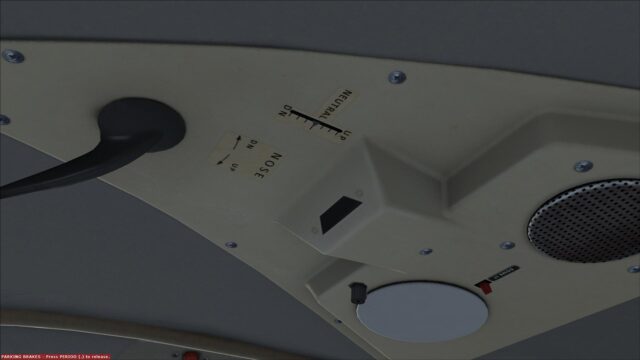


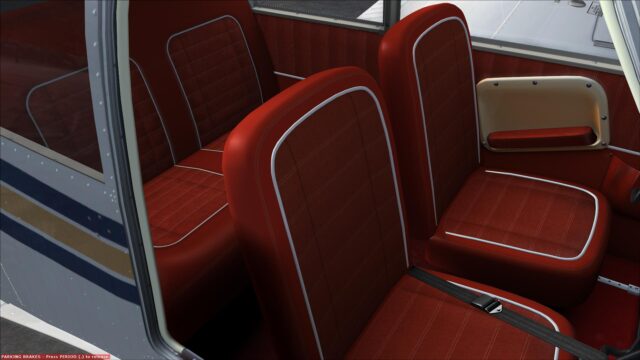




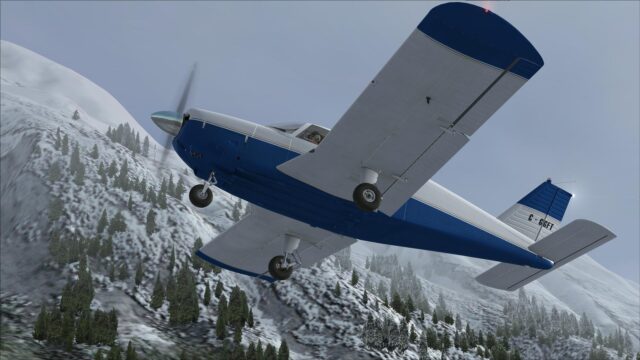
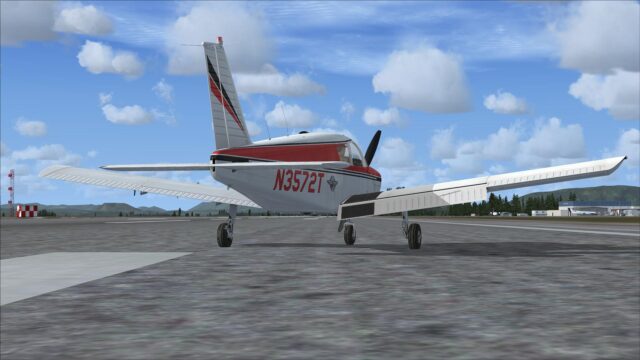
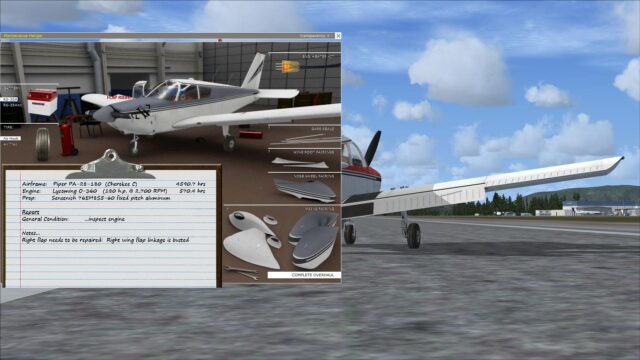
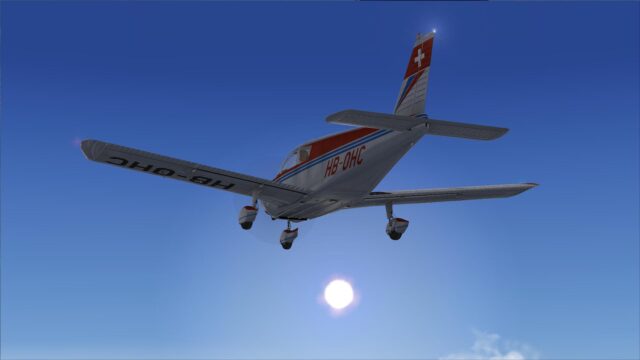

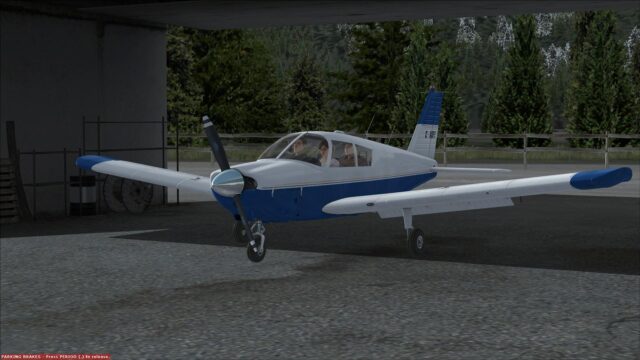

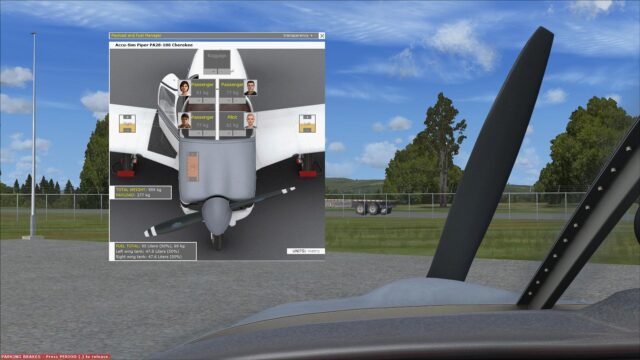
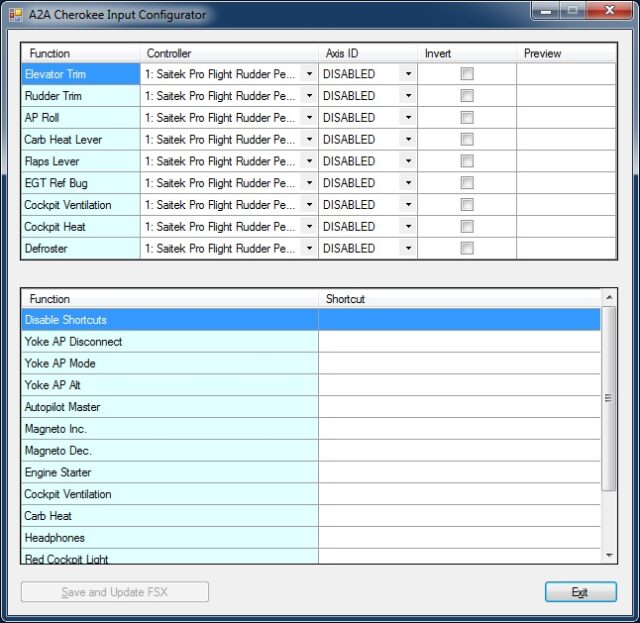

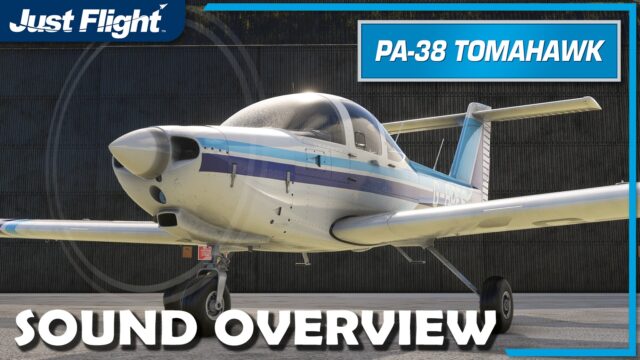

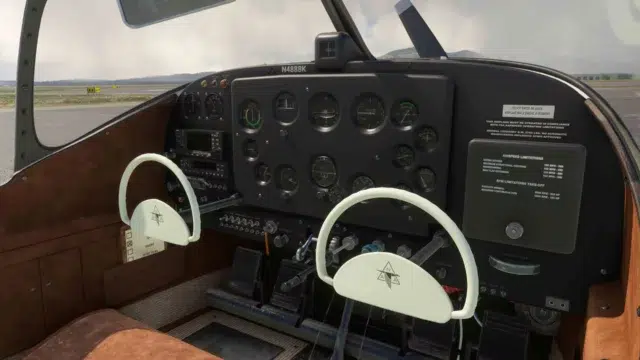

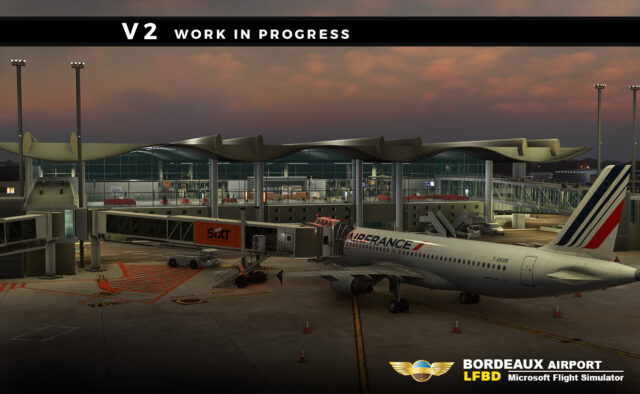

0 Responses
Excellent review !
Though I’m not sure what the complaint is about the PA-28-180. True, as a trainer aircraft the Cherokee may have been superseded by the Warrior, but both are still the most common GA aircraft, with the exception of the C172.
The PA-28-1×1 aircraft, from the 1970s through to those still in production now, are extremely common, whether in Cadet, Warrior or Archer guise. Less common in other variants. Straight-winged PA-28 Cherokee 1×0 aircraft are really quite rare in comparison. It’s not really surprising, considering how long the “new shape” ones have been in production compared to how long the original straight-winged versions were.
I think, personally, that certain members of A2A might have a little bias towards 1960s GA aircraft, over their replacements. As I said in the review, what they’ve created is a hybrid – a classic aircraft, with a modern avionics fit and add-ons. It works in the sim for entertainment users perfectly, what I question is how the Cherokee for P3D fits in? It’s being licensed for commercial use, but you can’t really use a procedure/systems trainer without it being at least similar to the aircraft you are training for. The fact that the -180 has different controls than all its newer siblings makes it of limited use in that capacity to commercial users.